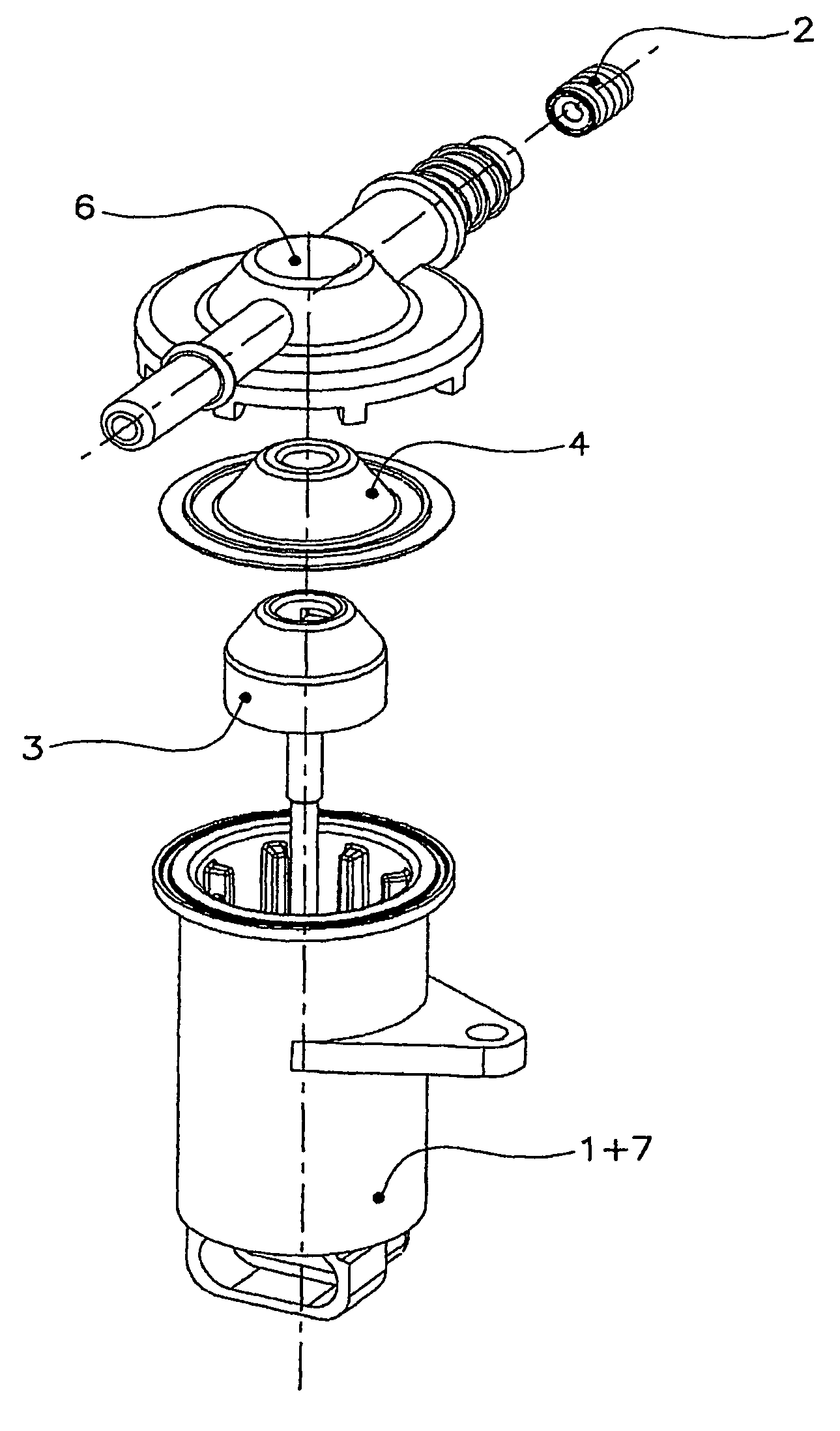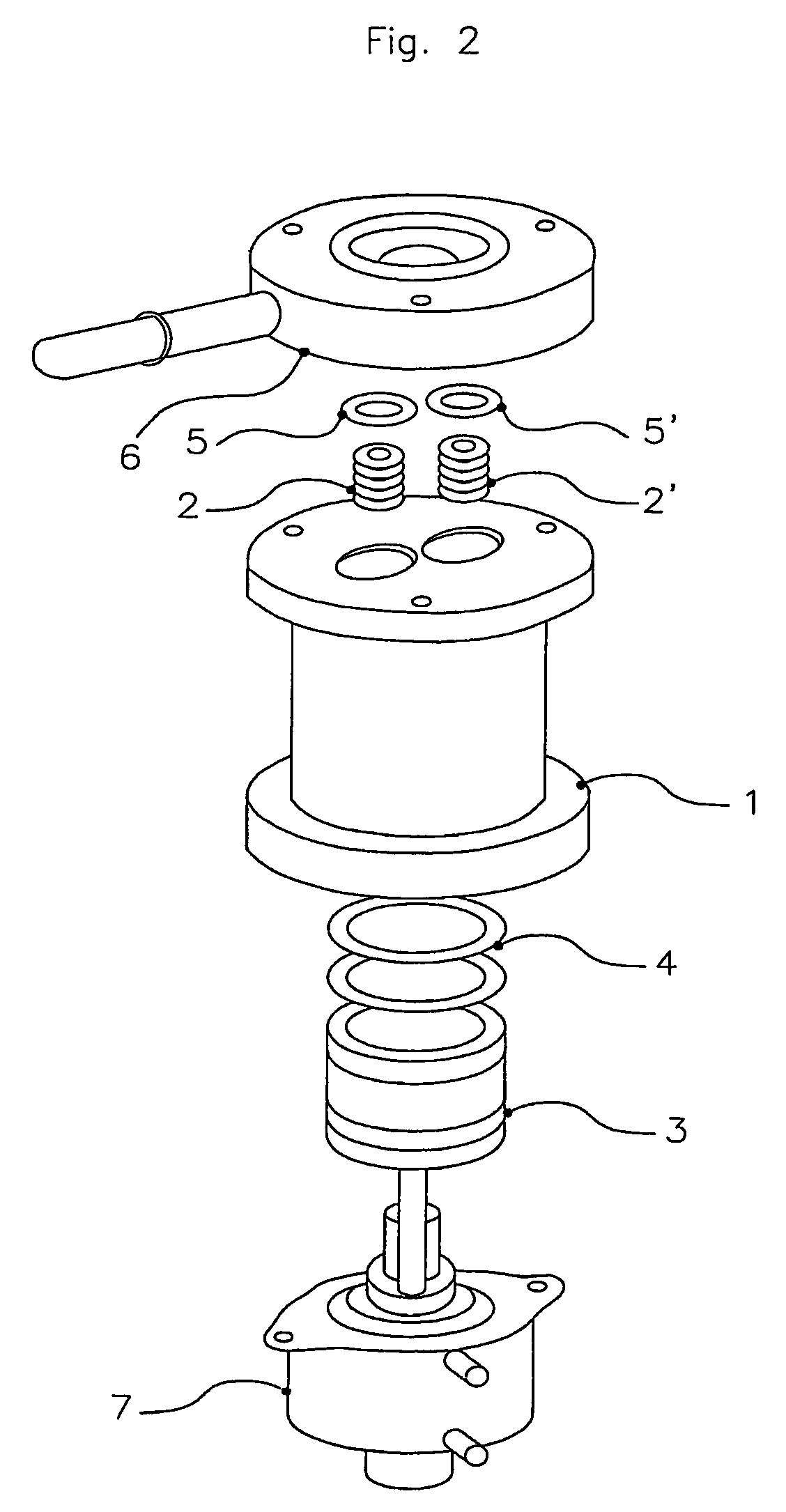Dosing pump for a liquid fuel additive
a technology of liquid fuel additive and dosing pump, which is applied in the direction of piston pump, non-fuel substance addition to fuel, charge feed system, etc., can solve the problem of typical noise of the solenoid valve used for actuation
- Summary
- Abstract
- Description
- Claims
- Application Information
AI Technical Summary
Benefits of technology
Problems solved by technology
Method used
Image
Examples
embodiment 1
[0048]These figures represent a syringe pump with sliding seal having a capacity of about 8 ml.
[0049]The syringe inhales through an in-hole (I) in manifold (6), seal (5) and one-way valve (2), the additive liquid, by the piston (3) performing only a single proportional course at a calculated dosing quantity.
[0050]The piston (3) moves by means of a stepper motor and gear reduction which are part of an actuator (7). There is a sliding seal (4) between the piston (3) and the cylinder (1).
[0051]After the liquid inhalation, the syringe pushes through an out-hole (0) in support (6), seal (5′) and one-way valve (2′), the additive liquid, by the piston (3), to the diesel fuel tank.
DESCRIPTION OF FIGS. 3 AND 4
embodiment 2
[0052]These figures represent a membrane-syringe pump with dish seal having a capacity of about 0.5 ml.
[0053]Its storage / reset position is shown in FIG. 3. The piston pushes the seal (4) up against the manifold (6), i.e. its end-stop.
[0054]The seal (4) is fixed between the cylinder (1) and manifold (6) at its perimeter (forming an additive tight seal) and attached to the piston (3) via its flat top (F). When the piston (3) moves, the top of the seal (F) moves with it and a void is created between the manifold (6) and the seal (4).
[0055]The syringe inhales through an in-hole in manifold (6) and one-way valve (2), the additive liquid, by the piston (3) performing a multiple of strokes up to the calculated dosing quantity.
[0056]The piston (3) moves by means of a stepper motor and gear reduction which are part of an actuator (7), which in this case is made in one piece with the cylinder (1).
[0057]The following sequence defines one cycle of the pump:[0058]The stepper motor is driven by t...
PUM
 Login to View More
Login to View More Abstract
Description
Claims
Application Information
 Login to View More
Login to View More - R&D
- Intellectual Property
- Life Sciences
- Materials
- Tech Scout
- Unparalleled Data Quality
- Higher Quality Content
- 60% Fewer Hallucinations
Browse by: Latest US Patents, China's latest patents, Technical Efficacy Thesaurus, Application Domain, Technology Topic, Popular Technical Reports.
© 2025 PatSnap. All rights reserved.Legal|Privacy policy|Modern Slavery Act Transparency Statement|Sitemap|About US| Contact US: help@patsnap.com



